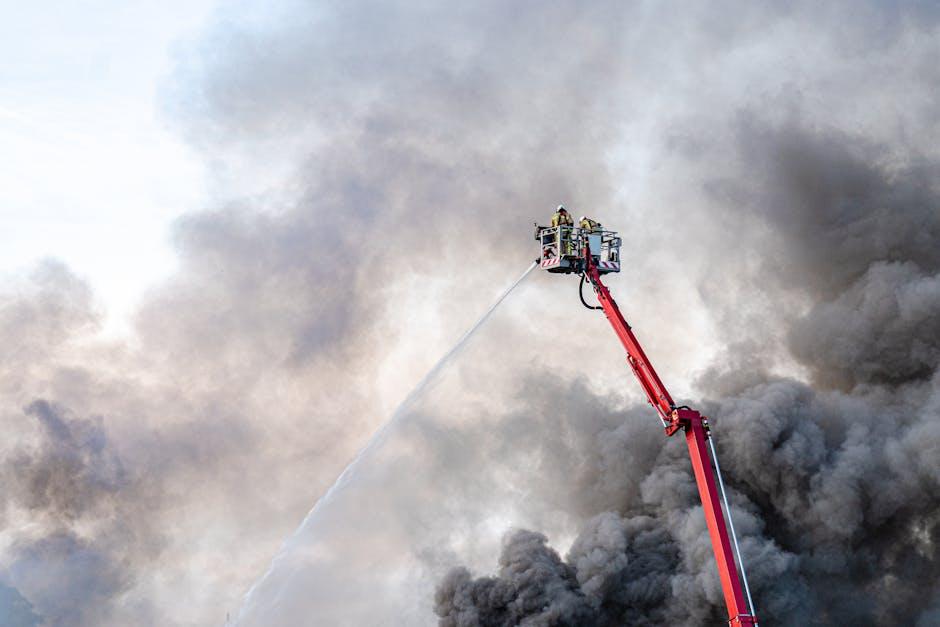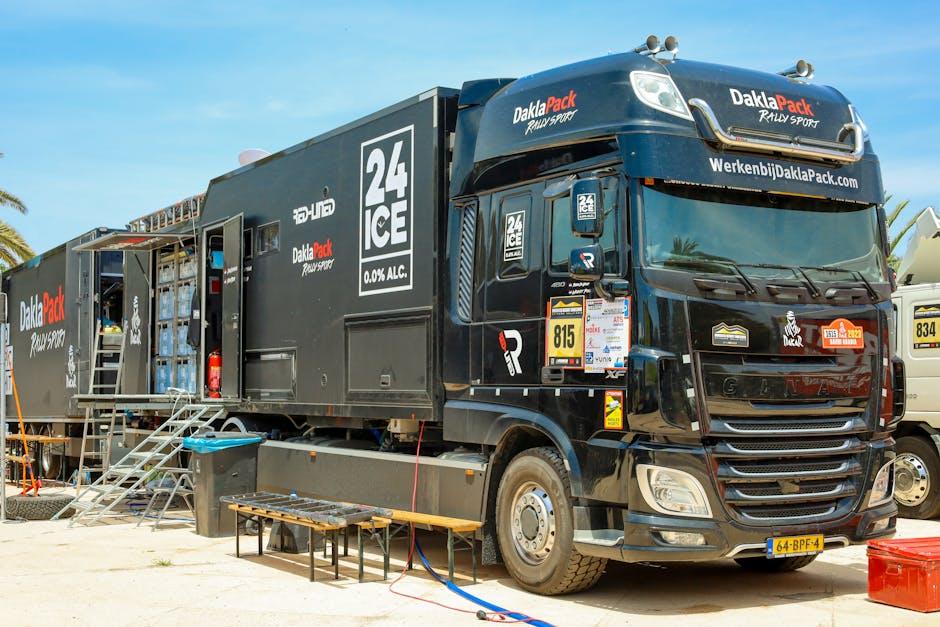Imagine suddenly spotting an obstacle on the road—a child chasing a ball, a car swerving unpredictably, or debris lying just ahead. In that split second, your reaction and ability to brake safely can mean the difference between a close call and a tragic accident. Emergency braking is not just about slamming your foot on the pedal; it’s a skill that combines quick thinking, proper technique, and calm under pressure. In this article, we’ll explore essential tips for mastering emergency braking, empowering you to navigate unexpected hazards with confidence and keep yourself and others safe on the road.
Table of Contents
- Emergency Braking Fundamentals Understanding When and How to React
- Mastering Vehicle Control During Sudden Stops
- The Role of Tire Condition and Road Surface in Emergency Braking
- Technology’s Impact on Braking Performance and Safety
- Practicing Emergency Braking Techniques in Controlled Environments
- Common Mistakes to Avoid for Effective Emergency Stops
- Q&A
- In Retrospect

Emergency Braking Fundamentals Understanding When and How to React
Mastering the art of emergency braking means recognizing the exact moment when instinct must shift to decisive action. Your reaction time is crucial, and understanding the signs that require an abrupt stop—such as unexpected obstacles or sudden traffic changes—can mean the difference between a near miss and a collision. Strong situational awareness paired with practiced control over your braking pressure helps maintain stability and prevents skidding or loss of control during these critical moments. It’s not just about slamming the brakes; it’s about smart and calculated responses.
When faced with a sudden hazard, your braking technique should focus on a series of rapid, controlled actions rather than a single panic stop. Key steps include:
- firmly pressing the brake pedal, avoiding abrupt pumping unless your vehicle lacks ABS
- maintaining a straight wheel position, to maximize traction and avoid skidding
- scanning your mirrors, preparing for secondary hazards or evasive maneuvers after the initial stop
| Emergency Braking Tip | Purpose |
|---|---|
| Apply steady pressure | Prevents wheel lock-up and maintains control |
| Keep wheels straight | Maximizes tire contact and grip on the road |
| Prepare for evasive action | Enables quick response to secondary dangers |

Mastering Vehicle Control During Sudden Stops
When you suddenly need to brake, maintaining control of your vehicle requires calm and precision. The key is to avoid panic and apply steady, firm pressure on the brake pedal rather than slamming it. This approach helps to prevent wheel lockup and keeps the car stable, especially on slippery or uneven surfaces. Modern vehicles equipped with ABS (Anti-lock Braking System) aid greatly by pulsating the brakes for you, so maintaining a grip on the steering wheel and focusing on direction is essential.
Understanding how weight shifts during sudden stops can also improve control. The vehicle’s weight transfers forward, which can affect steering responsiveness. To counter this, keep both hands on the wheel in a balanced grip and be prepared to make small steering adjustments to stay in your lane. Here are a few quick tips to master this skill:
- Engage ABS correctly: Avoid pumping the brakes, let the system do the work.
- Keep eyes up: Focus where you want to go, not on the obstacle.
- Smooth steering: Small, controlled inputs prevent overcorrection.
| Factor | Effect | Control Tip |
|---|---|---|
| Weight Shift | Reduced rear traction | Firm steering grip |
| ABS Activation | Brake pulsation | Do not release brake |
| Road Surface | Variable grip | Adjust brake pressure |

The Role of Tire Condition and Road Surface in Emergency Braking
When you slam on the brakes in an emergency, the condition of your tires plays a pivotal role in how quickly your vehicle can come to a halt. Tires with adequate tread depth and proper inflation ensure optimal grip on the road, significantly reducing stopping distance. On the flip side, worn-out tires or those with uneven wear can increase the risk of skidding or hydroplaning, especially in wet conditions. Regularly check tread wear patterns and keep your tires inflated according to manufacturer recommendations to maintain maximum traction and safety.
Equally important is the type and condition of the road surface you’re driving on. Smooth asphalt with good drainage offers better friction than gravel or icy patches, impacting braking performance dramatically. Here’s how different surfaces affect braking efficiency:
| Road Surface | Braking Efficiency | Risk Factor |
|---|---|---|
| Dry Asphalt | High | Low |
| Wet Asphalt | Medium | Medium |
| Gravel or Dirt | Low | High |
| Snow/Ice | Very Low | Very High |
- Adjust your braking distance depending on the road surface.
- Drive slower in adverse weather conditions to compensate for reduced traction.
- Be vigilant of sudden changes in road texture that could affect tire grip.

Technology’s Impact on Braking Performance and Safety
Advancements in automotive technology have significantly enhanced braking systems, making emergency stops more efficient and reliable than ever before. Modern vehicles incorporate features like Anti-lock Braking Systems (ABS), which prevent wheel lock-up during sudden braking, allowing drivers to maintain steering control. Additionally, Electronic Brake-force Distribution (EBD) optimizes brake pressure based on load conditions, ensuring balanced stopping power. These innovations contribute to reduced stopping distances and enhanced safety, especially in unpredictable driving scenarios.
Beyond mechanical improvements, smart technologies such as Automatic Emergency Braking (AEB) utilize sensors and cameras to detect imminent collisions and autonomously apply brakes when the driver fails to react promptly. Here are a few key components that bolster braking performance today:
- Brake Assist: Amplifies pressure during emergency braking to maximize stopping power.
- Traction Control: Prevents wheel slippage, working harmoniously with braking.
- Adaptive Cruise Control: Maintains safe distances, reducing sudden braking needs.
| Technology | Primary Benefit | Impact on Safety |
|---|---|---|
| ABS | Prevents wheel lock-up | Improved steering control during stops |
| AEB | Automatic brake application | Reduced collision risk |
| EBD | Brake force balance | Optimized stopping power |

Practicing Emergency Braking Techniques in Controlled Environments
Getting hands-on experience with emergency braking in a controlled environment is invaluable for mastering this critical driving skill. Practice allows you to familiarize with the vehicle’s brake response without the pressure of real danger. Start by gradually increasing your speed and applying firm, steady pressure on the brake pedal to simulate sudden stops. You’ll notice how the vehicle’s stability reacts, helping you understand how much force is needed to bring the car to a smooth halt while maintaining control. Avoid abrupt or overly aggressive actions at first—focus on precision and consistency.
In structured sessions, it’s beneficial to include these exercises:
- Threshold braking: Learning to press the brake pedal just before the wheels lock up.
- ABS engagement: Practicing emergency stops with and without ABS to feel the difference in pedal feedback.
- Controlled skids: Simulating slippery surfaces in a safe environment to improve reaction and recovery.
| Technique | Purpose | Key Benefit |
|---|---|---|
| Threshold Braking | Maximize braking force | Shorter stopping distance |
| ABS Familiarity | Prevent wheel lockup | Maintain steering control |
| Controlled Skids | Manage traction loss | Enhanced hazard response |

Common Mistakes to Avoid for Effective Emergency Stops
One of the most frequent errors drivers make during emergency stops is slamming the brakes abruptly. While it might seem like the quickest way to halt the vehicle, this can lead to loss of control or skidding, especially on wet or slippery roads. Instead, try to apply steady, firm pressure to the brake pedal to maximize the grip between the tires and the road. Also, avoid the instinct to jerk the steering wheel sharply while stopping, as this can cause instability and increase the risk of accidents.
Another common mistake is failing to maintain a safe following distance. Tailgating leaves little room for reaction, making emergency stops much more dangerous. Drivers often underestimate the time and distance needed to come to a full stop, particularly at higher speeds. Below is a quick reference table for safe following distances based on speed:
| Speed (mph) | Safe Following Distance (seconds) |
|---|---|
| 30 | 3 |
| 50 | 4 |
| 70 | 5 |
- Check your mirrors regularly to anticipate slowdowns or stops ahead.
- Avoid distractions like mobile devices that can delay your reaction time.
- Stay calm to make better decisions and execute a safe stop efficiently.
Q&A
Q&A: Emergency Braking Tips for Safe Driving
Q1: What is emergency braking, and why is it important?
A: Emergency braking refers to the rapid application of brakes to avoid an imminent collision or hazard on the road. It’s crucial because it can prevent accidents, reduce the severity of crashes, and save lives when every second counts.
Q2: How can drivers prepare themselves to react promptly in an emergency braking situation?
A: Awareness is key. Drivers should always stay focused, anticipate potential hazards, and maintain a proper following distance. Practicing calm, controlled braking during routine drives can also help build muscle memory for sudden stops.
Q3: What’s the difference between emergency braking and regular braking?
A: Regular braking is gradual and controlled, designed to slow down or stop the vehicle under normal conditions. Emergency braking is abrupt and forceful, delivering maximum stopping power in the shortest amount of time to avoid danger.
Q4: Are there specific techniques to improve emergency braking effectiveness?
A: Yes. One effective method is “threshold braking,” which means applying the brakes as hard as possible without locking the wheels (on vehicles without ABS). For cars with ABS, firmly pressing the brake pedal and letting the system modulate the brake force is best.
Q5: How does vehicle technology assist with emergency braking?
A: Many modern cars are equipped with Emergency Braking Systems (EBS) or Autonomous Emergency Braking (AEB) that detect obstacles and automatically apply brakes if the driver doesn’t react in time, providing an extra layer of safety.
Q6: What should drivers avoid doing during an emergency braking scenario?
A: Avoid slamming the brakes so hard that wheels lock up (if the car lacks ABS), which can cause loss of steering control. Also, don’t oversteer or swerve aggressively, as it can lead to skidding or collisions.
Q7: How does road condition affect emergency braking?
A: Wet, icy, or uneven roads increase stopping distances and reduce tire grip. Drivers should adjust their speed and following distance accordingly, knowing that emergency braking will be less effective in poor conditions.
Q8: Can practicing emergency braking help improve overall driving safety?
A: Absolutely. Practicing in a safe environment helps drivers learn how their vehicle responds and builds confidence to act decisively when real emergencies arise.
Q9: What role does maintaining the vehicle play in emergency braking?
A: Proper maintenance is essential. Well-maintained brakes, tires with good tread, and a responsive brake system ensure your vehicle can perform optimally when emergency braking is needed.
Q10: What is the safest mindset to have regarding emergency braking?
A: Stay proactive, not reactive. Always anticipate and scan the road ahead, giving yourself ample time and space to brake safely—ideally before an emergency occurs. Being prepared mentally and physically fosters safer driving habits every day.
In Retrospect
In the unpredictable dance of the road, mastering emergency braking is like having a secret rhythm that can keep you safe when the unexpected steps in. By staying calm, practicing proper techniques, and understanding your vehicle’s limits, you equip yourself with a vital skill that turns moments of panic into opportunities for control. Remember, safe driving isn’t just about reacting — it’s about preparing. So, keep these emergency braking tips in your driving toolkit, and let every journey be guided by confidence and care.
